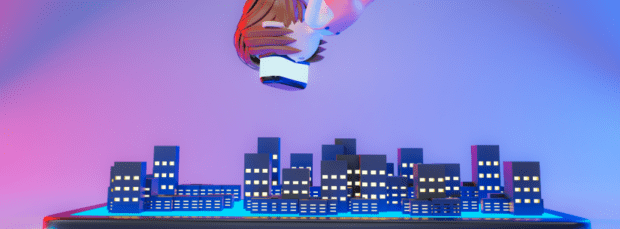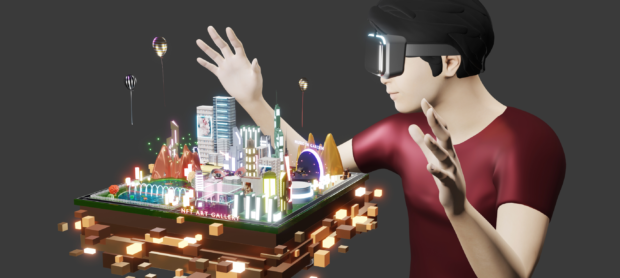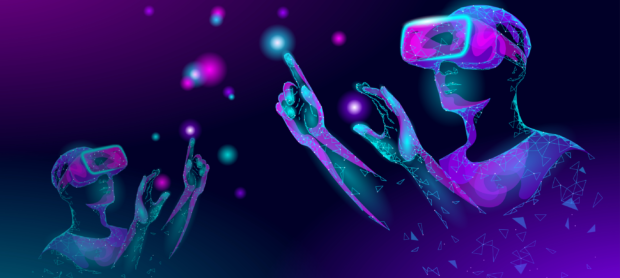Gamification, the practice of integrating game-like elements into non-gaming environments, has emerged as a creative and revolutionary force across a number of sectors. The fundamental concept of gamification is to take use of people’s intrinsic need for competition, prizes, and recognition in order to inspire and engage users, staff members, or clients. Gamification fosters engagement, encourages learning, and fosters progress across a variety of industries in the fast-paced world of today. Gamification methods are being used to create memorable experiences, promote desirable behaviors, and inspire loyalty in a variety of industries, including business, finance, healthcare, and education. This article examines gamification’s many uses and effects while underlining how important it is to the future of work, education, and recreation.
Understanding Gamification
Gamification is the process of incorporating game mechanics, design, and components into situations that are not typically used for gaming in order to increase user engagement, motivation, and overall experience. British computer programmer and game designer Nick Pelling originally used the word “gamification” in 2002. The idea has, however, been around for much longer, going back to early instructional games and loyalty schemes. The fast development of technology, notably the emergence of smartphones and social media platforms, which have made it simpler to produce and disseminate interesting, interactive material, is to be blamed for the widespread acceptance of gamification in recent years.
A number of essential components that give games their inherent motivation and enjoyment are at the core of gamification. They consist of:
– Clear aims and objectives
– Regulations and restrictions
– Feedback and markers of progress
– Awards, badges, and points
– Levels and difficulties
– Collaboration and opposition
– Storytelling and narrative
Organizations may generate a feeling of accomplishment, mastery, and belonging among users, workers, or customers by integrating these components into non-gaming environments.

Gamification has several advantages in a variety of businesses, including:
– Increased user motivation and engagement
– Increased performance and productivity
– Enhanced retention and learning results
– More client pleasure and loyalty
– Promotion of good habits and conduct
– Fostering creativity and problem-solving
– Increased social interaction and cooperation
These advantages may result in observable improvements in client retention, cost savings, and sales.
Gamification is not without its difficulties and possible downsides, despite the positive benefits it has produced. A few of them are:
– Excessive reliance on external incentives, which may erode internal drive
– Gamification platforms with poor design, unclear goals, or that ignore user requirements
– The chance of encouraging unhealthy competitiveness or bad habits
– Concerns about user data gathering and usage that pertain to privacy and data security
– The possibility that gamification would be seen as being exploitative or manipulative
Organizations must carefully evaluate their goals, target audience, and ethical implications while building and deploying gamified systems in order to achieve effective gamification projects.
Gamification in the Business World
Training and development for employees:
Employee training and development have benefited from the use of gamification, which turns conventional learning techniques into fun, participatory activities. Companies may encourage workers to engage in training sessions, remember the material more efficiently, and use new abilities in the workplace by introducing game features like points, badges, and leaderboards.
Increasing output and engagement
Gamification in the workplace has a huge positive impact on employee engagement and productivity. Gamified systems engage workers’ intrinsic motivation by defining clear objectives, giving timely feedback, and rewarding accomplishments, which motivates them to do jobs more quickly and accurately. Moreover, gamification may encourage friendly rivalry among team members, spark innovation, and promote camaraderie, all of which can increase work satisfaction and lower turnover rates.
Marketing and sales
For sales and marketing teams, gamification has become a formidable tool that may help them engage and reach prospective clients more successfully. Businesses may encourage people to interact with their brand, produce leads, and increase conversions by using game features like incentives, challenges, and social sharing.
Client loyalty initiatives
Gamification strategies have been used for a long time in customer loyalty programs to reward and keep consumers. With the purpose of promoting recurring business and fostering long-lasting connections, these programs often provide points, discounts, or other incentives. Incorporating gamification features like progress bars, accomplishment badges, and tiered reward systems into loyalty programs is now possible for businesses because to the development of digital technology and mobile applications.

Gamification in Education
Gamification implementation in the classroom
The use of games in the classroom is changing how students interact and learn. Including game components like points, badges, leaderboards, and quests enables educators to design a more dynamic and interesting learning environment that accommodates a variety of learners’ preferences and learning styles. Gamified exercises and evaluations may encourage critical thinking, cooperation, problem-solving, and creativity, allowing students to take charge of their education and acquire crucial 21st-century skills.
Platforms for online education and e-learning
The growth of online education platforms and e-learning has made it possible for gamification to be widely used in remote learning. To keep students interested and motivated, these systems often include gamified components like adaptive feedback, progress monitoring, and social engagement. Gamified e-learning experiences may also be customized to meet the requirements and interests of specific students, offering individualized paths to skill development and mastery.
Higher education and professional growth via gaming
As universities and training providers become more aware of the potential of game-based learning to improve student engagement and learning outcomes, gamification is also gaining ground in higher education and professional development. Students and professionals may learn complicated skills, get real-world experience, and apply theoretical ideas via gamified courses, simulations, and case studies. Gamified learning systems may also let students collaborate and network, which promotes a feeling of belonging and peer support.
Gamification’s role in encouraging lifelong learning
The capacity to learn and adapt is essential for both personal and professional success in today’s environment of fast change. By making the learning process more pleasurable, accessible, and relevant to people’s needs and interests, gamification significantly contributes to the promotion of lifelong learning. Gamified learning experiences may empower people to constantly acquire new abilities, explore new subjects, and remain interested in learning throughout their lives by using the power of game mechanics and digital technology.

Gamification in Healthcare
Increasing adherence and patient involvement
Gamification is essential for improving patient engagement and treatment plan adherence in healthcare. Healthcare practitioners may motivate patients to participate more actively in managing their health by introducing game components like challenges, incentives, and progress monitoring into patient education and self-care activities.
Medical simulation and training
Gamification is being utilized in medical education and training to provide immersive, interactive learning experiences that aid professionals and students in honing their abilities and acquiring new information. Virtual patients, serious games, and medical simulations may provide players useful hands-on experience in diagnosing and treating a variety of diseases, carrying out medical procedures, and making important choices under duress.
Apps for good health
Gamification has become a well-liked strategy for encouraging healthy lives and self-improvement due to the emergence of health and wellness applications. For instance, gamified fitness applications encourage users to exercise consistently, measure their progress, and share their accomplishments with peers by using awards, leaderboards, and social features.
Gamification in treatment and mental health
Gamification is also being used in therapy and mental health to help individuals manage their mental health and cope with a variety of conditions. Goal-setting, progress monitoring, and positive reinforcement are often included in gamified mental health applications and programs to aid users in creating coping mechanisms, cultivating mindfulness, and fostering resilience.
Gamification in Environmental and Social Causes
Environmental sensitivity and protection
Gamification is used as a potent technique to encourage conservation activities and increase environmental awareness. Gamified platforms may engage users and teach them about the value of sustainable living, resource management, and climate change by including game features like challenges, prizes, and social interaction.
Social advocacy and activism
Gamification has made its way into social action and advocacy, assisting groups in bringing attention to pressing problems, rallying supporters, and enacting significant change. Gamified campaigns may employ the persuasiveness of narrative, rivalry, and prizes to compel participation, motivate action, and create a feeling of community around common interests.
Fostering community and working together
Gamification may be very helpful in creating relationships, encouraging cooperation, and stimulating group action in community building and collaboration initiatives. Gamified platforms may create a fun and engaging area for community members to exchange ideas, cooperate on projects, and support each other’s objectives.
Using crowdsourcing and group problem-solving
By using the knowledge, creativity, and skill of many groups, gamification has the ability to unleash the power of crowdsourcing and collaborative problem-solving. Gamified crowdsourcing systems may encourage people to work together on ambitious initiatives, generate creative ideas, and solve challenging challenges.

Conclusion
In this article, we have looked at how gamification may revolutionize a variety of sectors, including business, education, healthcare, and social causes. Gamification has the ability to alter how we interact, learn, work, and cooperate by incorporating game mechanics and design principles, spurring development, creativity, and beneficial change in every area of our life.
As businesses use gamification to provide more immersive, customized, and significant experiences, there are unquestionably many chances for the technology to expand and innovate in the future. To remain competitive and relevant in a world that is continuously changing, it is essential for organizations, institutions, and people to be aware, open-minded, and proactive in investigating and embracing gamification tactics.
Are you prepared to use gamification to make your vision a reality? Eventyr is ready to assist! With our highly skilled professional staff working under your direction, we can help you put gamification tactics designed to meet your specific demands and objectives into action. Don’t pass up the chance to use gamification’s enormous potential for your venture or project. To learn more and take the first step toward making your idea a reality, contact us right now.




